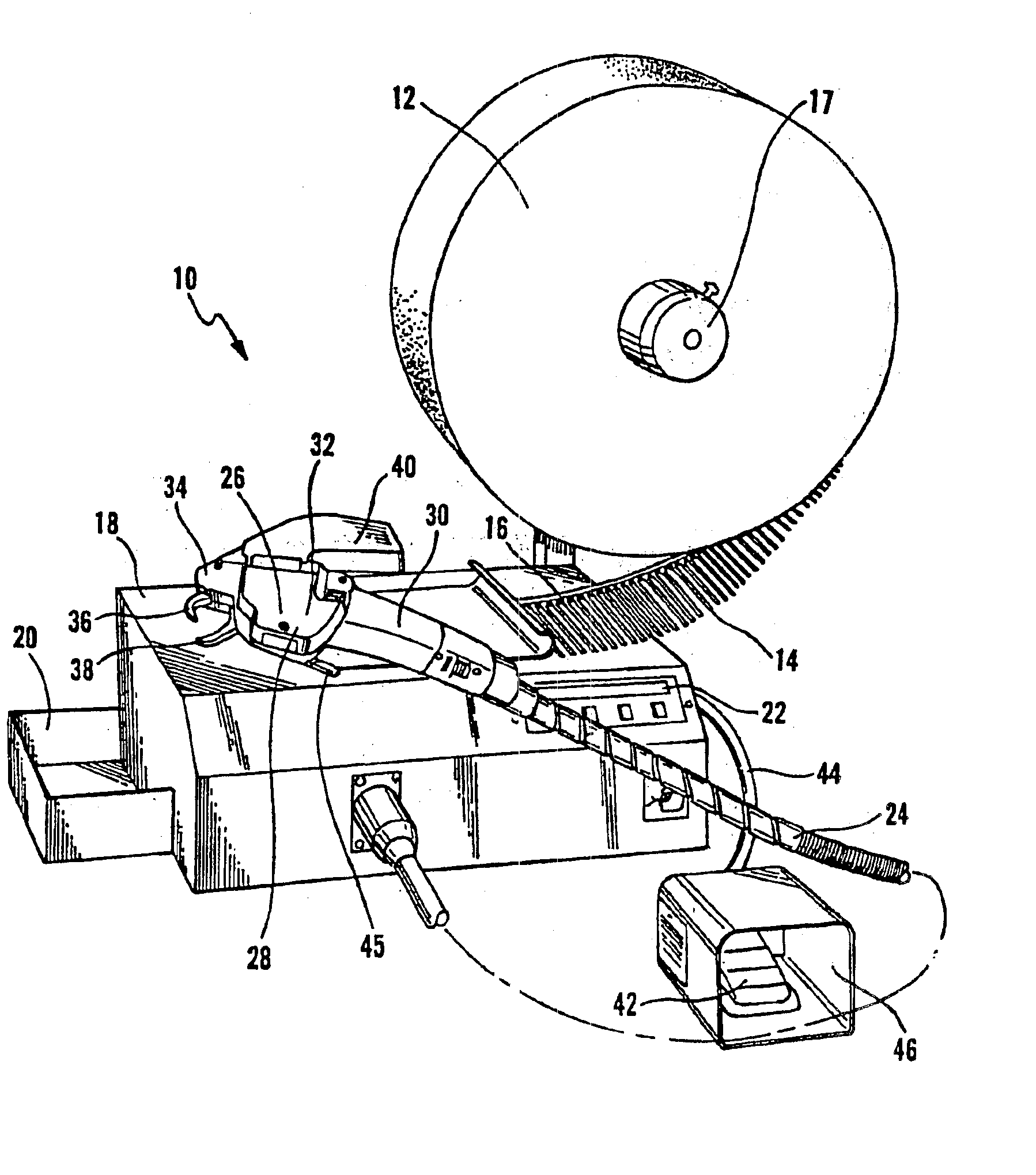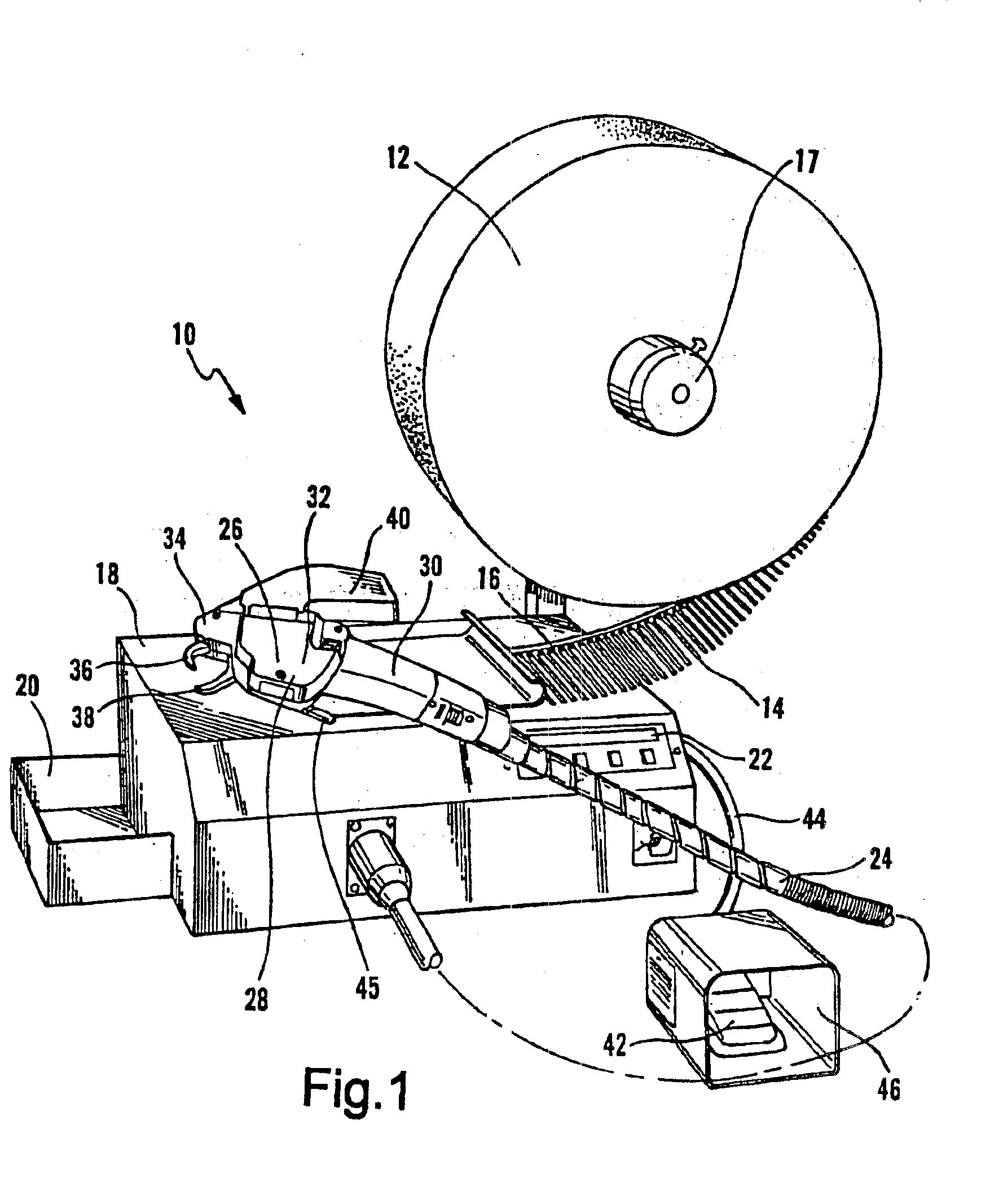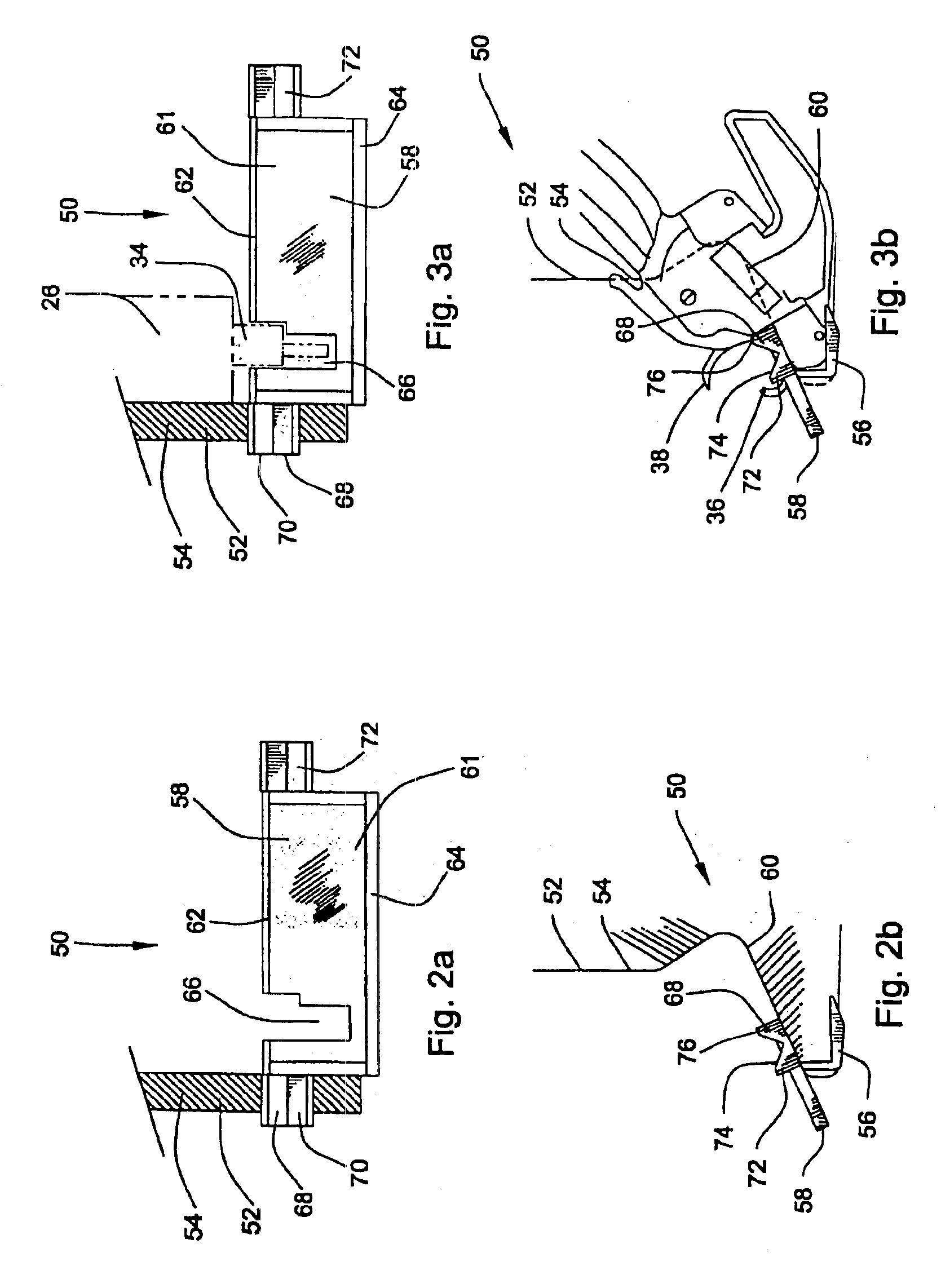Hang tag and method of applying hang tag to an elongated object
a technology of hanging tags and elongated objects, applied in the field of tags, can solve the problems of largely unsuccessful increase in safety of warnings included with packaging, particularly susceptible to injury or death of electric cord sets, and low surface energy materials, so as to avoid serious injuries and deaths, and low cost
- Summary
- Abstract
- Description
- Claims
- Application Information
AI Technical Summary
Benefits of technology
Problems solved by technology
Method used
Image
Examples
example 1
This example illustrates the durability and resistance to “wear and tear” of hang tags according to the invention.
In particular, three hang tags (i.e., Tag #1, Tag #2, and Tag #3) were prepared. Each hang tag was formed from a C2S Valeron Film (7.5 mil). Each hang tag was prepared with a generally rectangular slot defined therein, having radiused edges. The slot in each of the hang tags had dimensions of 0.375 inches by 1.375 inches. Tag #1 had a slot with a minimum distance of 0.20 inches from any edge of the hang tag. Tag #2 had a slot with a minimum distance of 0.156 inches from any edge of the hang tag. Tag #3 had a slot with a minimum distance of 0.15 inches from any edge of the hang tag. Each tag was attached and tensioned to an electrical cord using a cable tie (Panduit PLT1M-XMR).
Each tag was subjected to all of the tests required for passing UL Standard 817 (see, e.g., U.S. Pat. No. 5,658,648). All three hang tags (#1-#3) passed all of the UL 817 tests, including 48 hours s...
PUM
| Property | Measurement | Unit |
|---|---|---|
| weight | aaaaa | aaaaa |
| thickness | aaaaa | aaaaa |
| thickness | aaaaa | aaaaa |
Abstract
Description
Claims
Application Information
 Login to View More
Login to View More - R&D
- Intellectual Property
- Life Sciences
- Materials
- Tech Scout
- Unparalleled Data Quality
- Higher Quality Content
- 60% Fewer Hallucinations
Browse by: Latest US Patents, China's latest patents, Technical Efficacy Thesaurus, Application Domain, Technology Topic, Popular Technical Reports.
© 2025 PatSnap. All rights reserved.Legal|Privacy policy|Modern Slavery Act Transparency Statement|Sitemap|About US| Contact US: help@patsnap.com



